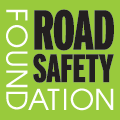GB EURORAP RESULTS 2008: GETTING AHEAD – RETURNING BRITAIN TO EUROPEAN LEADERSHIP IN CASUALTY REDUCTION
A 13km section of road between Macclesfield and Buxton has been named as Britain’s most dangerous road in the latest British EuroRAP results ( Getting Ahead: Returning Britain to European Leadership in Road Casualty Reduction). The single-carriageway road has been the scene of 43 fatal or serious collisions since 2001, nearly three-quarters of them involving motorcyclists.
According to Dr Joanne Hill who heads the Road Safety Foundation which carried out the research, despite Cheshire County Council’s best efforts to improve the safety of the road by introducing motorcycle-friendly crash barriers, motorcyclists treating the route as a “race track” have secured its unenviable position in the league of dangerous roads.
When collisions involving motorcyclists are removed from the analysis, this 13km stretch moves from the highest risk road in the country to one of the safest. Overall, if motorcyclist collisions are removed from the league table, the A61 between Barnsley and Wakefield is revealed as the most dangerous road in Britain. This 10km single carriageway running through countryside has poor forward visibility, is undulating and bendy with many of the crashes happening at bends and junctions, according to Dr Hill.
“The fact that the Macclesfield to Buxton road tops the list of Britain’s most dangerous roads highlights the fundamental issue of road-user behaviour when it comes to safety. However, poor road design and inadequate safety measures on the majority of the roads in the “most dangerous” list have contributed to a high proportion of the fatal or serious collisions each year,” says Dr Hill.
“The majority of road authorities this year identified the need for significant funding for road safety improvements and maintenance of existing roads as the one thing which would make the biggest difference to reducing fatal or serious collisions on sections within their area.”
This year’s ‘persistently higher risk’ roads are again concentrated in the North of England and the Midlands. In addition, the results show the highest risk roads by Government Office Region.
According to Dr Hill, although there has been an overall drop of 18 per cent in risk across the motorway and main road network in the past three years, the rating of motorways and the primary route network still causes major concern. “Despite significant advances in knowledge, engineering practice and road-safety countermeasures, 30 per cent of the primary A road sections do not achieve even the top two safest risk bands that we would expect as the minimum safety level for these strategic roads. Also, 24 per cent of motorway sections fall outside the safest risk band,” says Dr Hill.
Britain’s most improved road in this year’s analysis by the Road Safety Foundation is the A453 from the A38 to Tamworth in Staffordshire. This rural single carriageway has seen an 88 per cent drop in the number of fatal or serious collisions in the last six years, taking it from a medium risk road to one of the safest. According to the Foundation, this has been achieved by introducing traffic lights, speed limit reductions and village pedestrian facilities.
The full risk map, showing risk on motorways and primary ‘A’ roads will be available in all Collins Road Atlases from 7 July 2008.

